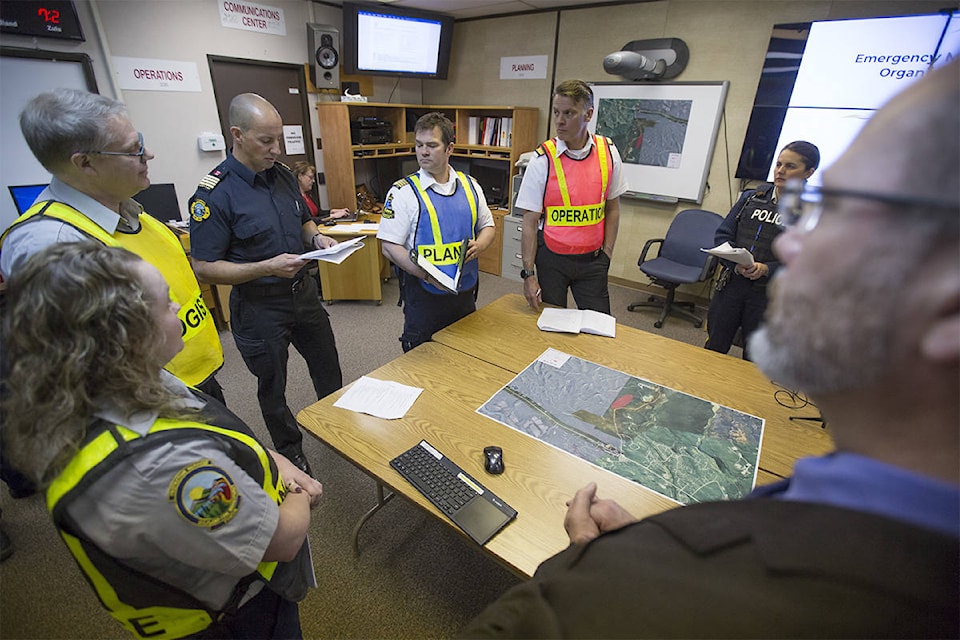The Southern Lakes region is on fire — 50 hectares of it, specifically, and the erratic flames, being fanned by high winds, could reach the outskirts of Golden Horn within 12 hours.
Wildland and volunteer firefighters are on scene battling the blaze, but with weather conditions uncertain and the fire showing signs of growing in the direction of inhabited areas, police and fire crews have been putting local residents on evacuation alert, should things get out of hand.
Meanwhile, in Whitehorse, a dozen or so people are gathered in a room a stone’s throw from the airport, about half of them huddled over a large map spread across two folding tables in the centre of the space. They’re wearing multi-coloured high-visibility vests with different words slashed across them in capital letters: OPERATIONS, PLANNING, LOGISTICS and FINANCE.
The section chiefs, along with other officials from police and fire, update each other and the response director on their respective areas of command as a person at a computer updates an activity log. After a few minutes, the meeting ends and they agree to meet again in an hour for the next update.
Luckily, Golden Horn residents aren’t actually at risk because nothing’s really on fire — although the meeting in the room actually did happen, it did so in front of a pack of journalists, who were invited to a mock activation May 8 of the territory’s Emergency Coordination Centre (ECC).
Located in an unsuspecting building just off the Alaska Highway, the centre, when activated, is the second-highest level of emergency response available in the Yukon. The ECC becomes the epicentre for situations that require multi-agency responses, and can be activated for everything from fires to floods to earthquakes to tanker-truck rollovers on the highway. Emergency Measures Organization director Diarmuid O’Donovan, who led the demonstration, said the response can be easily scaled up to involve dozens of players, or scaled down and run off the side of a desk.
The South Lakes fire scenario (which ended thanks to a convenient rainstorm) would be considered a medium-sized response, O’Donovan said.
Reporters also heard from Wildland Fire Management meteorologist Mike Smith and Environment Yukon hydrologist Rick Janowicz about the upcoming fire season and flood risk, respectively. Smith said that forecasts for the upcoming months appear to show normal snow melting rates, temperatures, levels of precipitation and moisture content, but that fire conditions are notoriously hard to predict — after all, British Columbia had anticipated a “normal” season last year, he noted.
Meanwhile, Janowicz said that the snowpack across the Yukon as of May was average, while ice thickness was low to normal. Flood risk across the territory is low, he said, with the exception of Old Crow, which is sitting at low to moderate risk.
Contact Jackie Hong at jackie.hong@yukon-news.com
